#egyptian temples
Explore tagged Tumblr posts
Text
Really a wonderful find. The Egyptians did use gold foil over tons of architecture. They famously used it on the rock outcropping at Gebel Barkal.
21 notes
·
View notes
Text

started building a temple and a queen showed up to supervise. o7
21 notes
·
View notes
Text
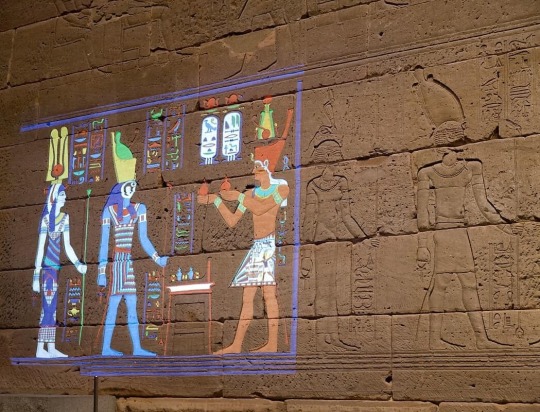
This is what hieroglyphs and figures in ancient Egyptian temples looked like before their colors faded. They were recreated using a polychromatic light display at the Metropolitan Museum of Art, New York, following thorough research.
44K notes
·
View notes
Text
Journey Through Time Discovering Egypt Wonders #Egypt,#AncientEgypt,#Pharaohs,#Pyramids,#Sphinx,#Ni
#Egypt,#AncientEgypt,#Pharaohs,#Pyramids,#Sphinx,#NileRiver,#Cairo,#Luxor,#TutankhamunTomb,#Cleopatra,#Hieroglyphics,#Mummies,#Archaeology,#EgyptianMythology,#EgyptianCulture,#EgyptTravel,#EgyptianArt,#GizaPyramids,#KingTut,#EgyptianGods,#Alexandria,#EgyptianTemples,#CairoMuseum,#EgyptianTombs,#RedSea,#Hieroglyphs,#NileCruise,#EgyptianMuseums,#EgyptianArtifacts,#EgyptianAntiquities,#EgyptianArchi…

View On WordPress
#Alexandria#ancient egypt#archaeology#Cairo#Cairo Museum#Cleopatra#egypt#Egyptian Art#Egyptian Civilization#Egyptian Culture#Egyptian desert#Egyptian Gods#egyptian history#Egyptian museums#Egyptian Mythology#Egyptian pharaohs#Egyptian Temples#Egyptian Tombs#Giza Pyramids#Hieroglyphics#Hieroglyphs#King Tut#Luxor#Mummies#mummy#Nile cruise#Nile River#Pharaohs#pyramids#Ramses II
0 notes
Text

#ancient egypt#cleopatra#egypt#egyptian#egyptian aesthetic#egyptian antiquities#egyptian art#egyptian royalty#eqyptian architecture#queen of egypt#egyptian scarab#egyptian pharaoh#egyptian cats#egyptian jewelry#egyptian pyramids#Egyptian scribe#pharaoh#Egyptian temples#gold
1 note
·
View note
Text

Interior of an Egyptian Temple by Albert Holz
#albert holz#art#ancient egypt#egypt#egyptian#temple#temples#architecture#archaeology#history#temple of edfu#edfu temple#ancient world
1K notes
·
View notes
Text
Pagans need community!
And I don’t mean the stuff we do on Tumblr or in Discord servers of whatever. I mean real life, face-to-face, communal practices that can be done in public. This is the only way we can get stuff like state recognition and temples to pray in.
Community is how the Abrahamics stay alive, community is what brought Wicca and neopaganism to the light, community is what we need. In the olden days the gods would be worshipped by whole states, cities, villages and households, but today it seems that we mainly have household worship, making ourselves content with the individualistic and private (hence relatively hidden) nature of our respective practices. But this won’t further any hope we may hold of getting back the temples and stuff.
Find other pagans in your area, form group chats, meet up and discuss, do rituals together, found and grow your community together. Pagans are closer than you think, and we are here when you least expect it. You just need to ask the gods to help you find them, or to help them find you, and they will steer you towards the right path. Ask and you shall receive.
Community starts with us. May the gods be with you
[P.S: I’m only speaking about what I’ve observed within Hellenic and Kemetic pagan spaces. I don’t know about other traditions but I think it’s a pretty universal message for those of us who yearn for temples and a blooming pagan community.]
#paganism#paganblr#pagan witch#helpol#hellenic polytheism#kemeticism#kemetic paganism#temple#deity worship#deity work#aphrodite#hera#zeus#dionysus#apollo#hermes#sutekh#sekhmet#hathor#ra#greek paganism#egyptian paganism
215 notes
·
View notes
Text
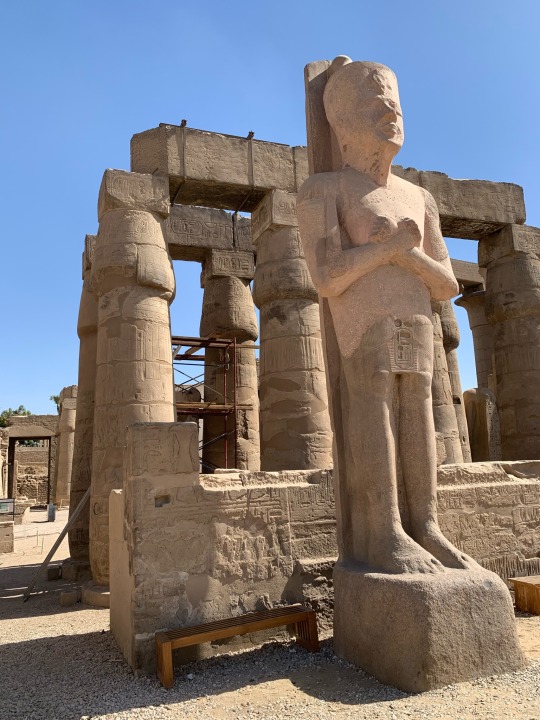
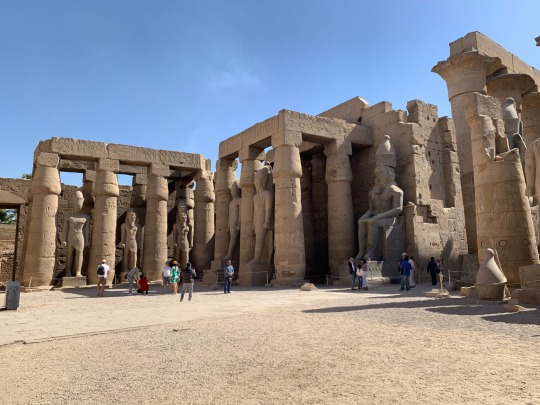
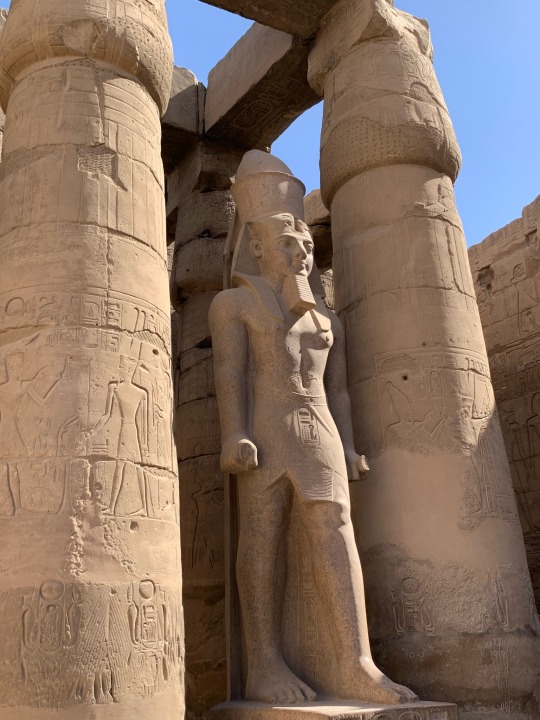
Luxor Temple, March 2023
#Luxor#temple#Thebes#waste#Egyptian temple#Egyptian#Egypt#ancient Egyptian#ancient Egypt#Kemet#Kemetic#Kemeticism#ramesses ii#pharaoh#Egyptian pharaoh
474 notes
·
View notes
Text


Made for each other
#Tim why the fuck do you have a copy of advanced Egyptian algebra in your locker#that’s not on the syllabus#Tim drake#Danny temple
414 notes
·
View notes
Text

Joint US-Egypt Archaeology Team Unearths 4,000-Year-Old Tomb in Luxor
11 coffins for men, women and children found inside necropolis, suggesting it was a family tomb.
Archeologists from Egypt and the United States unearthed an ancient tomb with 11 sealed burials near the famed city of Luxor, Egyptian authorities said in a statement Friday.
Egypt’s Tourism and Antiquities Ministry said that the tomb, which dates back to the Middle Kingdom (1938 BCE-1630 BCE), was found in the South Asasif necropolis, next to the Temple of Hatshepsut on the Nile’s West Bank in Luxor.


The joint Egyptian-American mission excavating the necropolis found coffins for men, women and children, suggesting that it was a family tomb used for generations during the 12th Dynasty and the beginning of the 13th Dynasty, said Mohamed Ismail Khaled, Secretary-General of the Supreme Council of Antiquities in Egypt.
He said ancient floods destroyed most of the burials’ wooden coffins and linen wrappings.
However, some items such as jewelry in women’s burials were found intact, including a finely crafted necklace with 30 amethyst beads and two cylindrical agate beads framing a hippo-head amulet, according to the statement.


Katherine Blakeney, chief American archeologist with the South Asasif Conservation Project, said they found two copper mirrors, one with a lotus-shaped handle, and the second with a unique design of Hathor, goddess of the sky, women, fertility and love in ancient Egypt.
According to a statement from the South Asasif Conservation Project, directed by Dr. Elena Pischikova, this find is the first Middle Kingdom tomb found in the area.
The project’s statement referenced several finds, including a green-blue glazed faience fertility figurine with truncated legs, decorated with jewelry markings on the legs and torso, and a square-shaped offering tray with relief representations of a bull’s head, a loaf of bread and other offerings.
In the 11 discovered burials, team member Dr. Afaf Wahba identified the skeletons of five women, two men and three children. Six of the individuals — primary females — were interred with burial assemblages.



#Joint US-Egypt Archaeology Team Unearths 4000-Year-Old Tomb in Luxor#Temple of Hatshepsut#South Asasif necropolis#ancient necropolis#ancient grave#ancient tomb#ancient artifacts#archeology#archeolgst#history#history news#ancient history#ancient culture#ancient civilizations#ancient egypt#egyptian history#egyptian art#ancient art
57 notes
·
View notes
Text

Statue of Ramesses II
Luxor Temple
83 notes
·
View notes
Text

69 notes
·
View notes
Text
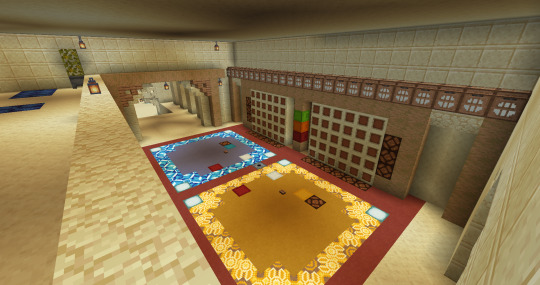
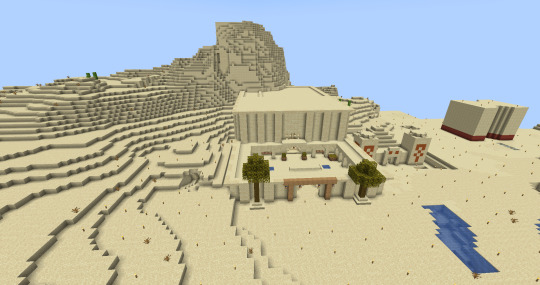
ya boi's built a tcg arena :D
I had always seen a build like this in this space, I just hadn't considered it being an arena. I was lucky someone offered to do the redstone for ppl if they cleared the space and provided all the materials. So I hired him to do mine, and thus, I now have an arena. And also no sandstone. XD
It's based on Egyptian temple designs, but done in a different style to the rest of my builds as it's meant to represent the older civilisation who used to live here. It's so old the temple has been transformed into a place to play tcg rather than used as a place of worship. The gods once worshipped here have been long forgotten.
#minecraft builds#hermitcraft#hc tcg#hctcg smp#tcg arena builds#egyptian builds#egyptian temples#Lore(tm)
5 notes
·
View notes
Text

Dendera Temple Complex : Egypt My mother had made the decision to travel to Israel, Jordan and Egypt. It has been a life long pilgrimage for mum. She was soo disappointed when this opportunity came up, COVID hit. Eureka this time the trip went off without a hitch. So of course I asked to share some of her photos of the trip. Some not so clear as they taken on her iPhone
#original photography#travel photography#original photographer#original artist#photographers on tumblr#ancient egypt#egyptology#egyptian#Dendera Temple Complex#archeology#Middle Kingdom ancient egypt#hieroglyphs#ancient architecture#historical architecture#history
196 notes
·
View notes
Text


"Statues of Horus, Ancient Egyptian god, at the temple dedicated to him at Edfu, Egypt. Horus was most often represented as a falcon. Each statue is over 2 metres tall. They are guarding the entrance into the inner courtyard through a structure known as a pylon. Carvings can be seen in the surface of the pylon. The pylon is made of sandstone, while the statues were carved from granite. The temple at Edfu is the best-preserved major temple in Egypt. It dates from the Ptolomaic period, and was built between 237 and 57 BC. It is located on the southern (upper) part of the River Nile, between Luxor and Aswan."
35 notes
·
View notes
Note
hello! i hope it's alright to ask you this but i was wondering if you have any recommendations for books to read or media in general about the history of judaism and jewish communities in egypt, particularly in ottoman and modern egypt?
have a nice day!
it's fine to ask me this! Unfortunately I have to preface this with a disclaimer that a lot of books on Egyptian Jewish history have a Zionist bias. There are antizionist Egyptian Jews, and at the very least ones who have enough national pride that AFAIK they do not publicly hold Zionist beliefs, like those who spoke in the documentary the Jews of Egypt (avaliable on YouTube for free with English subtitles). Others have an anti Egyptian bias- there is a geopolitical tension with Egypt from Antiquity that unfortunately some Jewish people have carried through history even when it was completely irrelevant, so in trying to research interactions between "ancient" Egyptian Jews and Native Egyptians (from the Ptolemaic era into the proto-Coptic and fully Coptic eras) I've unfortunately come across stuff that for me, as an Egyptian, reads like anti miscegenationist ideology, and it is difficult to tell whether this is a view of history being pushed on the past or not. The phrase "Erev Rav" (meaning mixed multitude), which in part refers to Egyptians who left Egypt with Moses and converted to Judaism, is even used as an insult by some.
Since I mentioned that documentary, I'll start by going over more modern sources. Mapping Jewish San Francisco has a playlist of videos of interviews with Egyptian Jews, including both Karaites and Rabbinic Jews iirc (I reblogged some of these awhile ago in my "actually Egyptian tag" tag). This book, the Dispersion of Egyptian Jewry, is avaliable for free online, it promises to be a more indepth look at Egyptian Jews in the lead up to modern explusion. I have only read a few sections of it, so I cannot give a full judgment on it. There's this video I watched about preserving Karaite historical sites in Egypt that I remember being interesting. "On the Mediterranian and the Nile edited by Harvey E. Goldman and Matthis Lehmann" is a collection of memiors iirc, as is "the Man in the Sharkskin Suit" (which I've started but not completed), both moreso from a Rabbinic perspective. Karaites also have a few websites discussing themselves in their terms, such as this one.
For the pre-modern but post-Islamic era, the Cairo Geniza is a great resource but in my opinion as a hobby researcher, hard to navigate. It is a large cache of documents from a Cairo synagogue mostly from around the Fatimid era. A significant portion of it is digitized and they occasionally crowd source translation help on their Twitter, and a lot of books and papers use it as a primary source. "The Jews in Medieval Egypt, edited by: Miriam Frenkel" is one in my to read pile. "Benjamin H. Hary - Multiglossia in Judeio-Arabic. With an Edition, Translation, and Grammatical Study of the Cairene Purim Scroll" is a paper I've read discussing the Jewish record of the events commemorated by the Cairo Purim, I got it off either Anna's Archive or libgen. "Mamluks of Jewish Origin in the Mamluk Sultanate by Koby Yosef" is a paper in my to read pile. "Jewish pietism of the Sufi type A particular trend of mysticisme in Medieval Egypt by Mireille Loubet" and "Paul B Fenton- Judaism and Sufism" both discuss the medieval Egyptian Jewish pietist movement.
For "ancient" Egyptian Jews, I find the first chapter of "The Story of the Jews: Finding the Words 1000 BC-1492 AD” by Simon Schama, which covers Elephantine, very interesting (it also flies in the face of claims that Jews did not marry Native Egyptians, though it is from centuries before the era researchers often cover). If you'd like to read don't click this link to a Google doc, that would be VERY naughty. There's very little on the Therapeutae, but for the paper theorizing they may have been influenced by Buddhism (possibly making them an example of Judeo-Buddhist syncretism) look here (their Wikipedia page also has some sources that could be interesting but are not specifically about them). "Taylor, Joan E. - Jewish women philosophers of first-century Alexandria: Philo’s Therapeutae reconsidered" is also a to read.
I haven't found much on the temple of Onias/Tell el Yahudia/Leontopolis in depth, but I have the paper "Meron M. Piotrkowski - Priests in Exile: The History of the Temple of Onias and Its Community in the Hellenistic Period" in my to be read pile (which I got off Anna's Archive). I also have some supplemental info from a lecture I attended that I'm willing to privately share.
I also have a document compiling links about the Exodus of Jews from Egypt in the modern era, but I'm cautious about sharing it now because I made it in high school and I've realized it needs better fact checking, because it had some misinfo in it from Zionist publications (specifically about the names of Nazis who fled to Egypt- that did happen, but a bunch of names I saw reported had no evidence of that being the case, and one name was the name of a murdered resistance fighter???)
#cipher talk#I find Leontopolis fascinating because after the first time a bunch of Egyptian Jews built a temple in Egypt a second guy did it#And allegedly had a not terrible scriptural justification! And the temple lasted for THREE EXTRA YEARS after Jerusalem was sacked!#Never let anyone tell you there was only one temple#There's also other stuff but this is what I immediately had#Some books I have I'm pretty sure just aren't good to start with lmao they're about very specific stuff#Modern Middle Eastern Jewish Thought: Writings on Identity politics and culture is interesting and includes Egyptian Jews#But it's definitely got a zionist bias. It's mostly essays#I'd definitely recommend reading up on Joseph Cattaui and Murād Farag because they were simply so influential#Even though Farag was a dumbass that wrote the first Arabic defense of Zionism#Ya‘qub Sannu‘ is also fascinating- he spent a lot of his time defending Muslims to European audiences so some people assumed he reverted#He didn't he just took a hard stance on it. Also he got exiled for criticizing the Khedivate#All 3 are in MMEJT iirc
246 notes
·
View notes